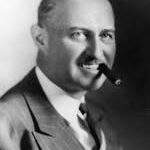Amos Alonzo Stagg: College Football’s Man in Motion is Jennifer Taylor Hall’s first book. Jennifer lives in northwest Arkansas where she writes and teaches English. Jennifer’s larger-than-life Uncle George fueled her passion for college football when he introduced her to the game he played at Ole Miss in the 1960s. Long after his own children tired of listening to his tales of glory on the gridiron, Jennifer remained captivated. Jennifer’s love endures, and she is thrilled to share the story of college football’s pioneering coach Alonzo Stagg, “The Grand Old Man of Football”.
Below you can read a little about the origin of Stagg’s career and listen to the interview with Jennifer Hall. I also highly recommend you pick up the book if this intrigues you at all.
The Birth of A College Football Legend
On August 16, 1862, President Abraham Lincoln was preparing to issue the Emancipation Proclamation, the transcontinental telegraph had just begun carrying messages from the Atlantic coast to the Pacific, and in West Orange, New Jersey, Eunice Pierson Stagg gave birth to her fifth child, Amos Alonzo.
From a young age, Alonzo Stagg gravitated to the game of baseball. The gridiron grass on which he would establish his legacy was just beginning to take root on college campuses and had not found a home in American preparatory schools. The Staggs’ home of West Orange had no high school, but neighboring Orange allowed non-resident enrollment at its high school by charging tuition.
Lonnie’s Sunday school teacher encouraged him to enroll, so the industrious teen took on additional work beating carpets, cleaning stoves and mowing lawns to pay the tuition. He performed well in the classroom and even better on the baseball diamond, where he established a reputation as an ace pitcher.
Stagg at Yale
Stagg enrolled at Yale University as a divinity student in the fall of 1884, and with no athletic scholarship and little financial help from his family to cover expenses, he worked as a campus custodian and waiter to pay his $1.00-per-week rent, $0.20-per-day meals and $29.80-per-semester tuition.
Stagg’s pitching skills secured him a starting position on the varsity baseball team his freshman year. During that first season, he led the Elis to a 2–1 victory in an exhibition game with the Boston Braves. Stagg’s reliability on the mound kept him in the role throughout his career at Yale, and during his tenure, the team earned five consecutive championships behind his 34-8-1 record. With no limits on eligibility, Stagg played each of his years as a Yale undergraduate and graduate student.
On May 26, 1888, the First Lady of the United States stood witness as Stagg imprinted his indelible mark on college baseball by striking out twenty Princeton batters while allowing only two hits. Asked later about his epic performance, Stagg replied, “Mrs. Cleveland entered the grandstand wearing the orange and black of Princeton. As the wife of the President of the United States, it seemed to me that she should have been neutral, and I pitched my arm off in resentment.”
Four weeks later, on June 23, Yale faced Harvard for a share of the league championship. Stagg took his position on the mound, and Yale won, 8–0. The two teams met for a deciding game three days later. With his arm too numb to pitch using his typical wind-up, Stagg opted for an underhanded delivery. He induced seventeen fly outs and led the Yalies to a 5–3 championship win over the Crimson. During Stagg’s five years on the mound, Yale went 15-4 versus Harvard and 14-3 versus Princeton.
A Football Life Begins
Stagg first played football during his third year at Yale and then sparingly, as the baseball captains feared he would injure his pitching arm. Notwithstanding his limited role, Stagg established himself as a leader on the gridiron team. In 1888, a college rule change lowered the tackling line from the waist to the knees, and Yale players struggled to adjust. Stagg responded to the problem by rolling up a mattress and hanging it from the roof of the gym. He then laid additional mattresses underneath as cushions and ran his teammates through long tackling drills. Stagg’s tackling dummy emerged as the first of many innovations he contributed to the game of football.
After two years of occasional service at end and guard, Stagg began to play regularly as a graduate divinity student. In 1889, he, Pudge Heffelfinger, and Charles O. Gill led the Elis to a 15-1 record, and the three were named to the first All-America team by Caspar Whitney and Walter Camp.
As Stagg continued his graduate studies in religion, he began to doubt his ability to influence others for Christ as a preacher. Despite all of his success in athletic pursuits, he lacked confidence in public speaking. In 1890, Alonzo Stagg left Yale and his pursuit of the ministry.
Realizing he could best serve the Lord influencing men on the gridiron and other fields of competition, he enrolled at the newly opened International YMCA Training School in Springfield, Massachusetts. There he began his coaching career. And there, Alonzo Stagg apprenticed for his life’s calling as an architect of football and a builder of men.
This is just a preview into the story that is Amos Alonzo Stagg: College Football’s Man In Motion. To learn the remarkable story that is Alonzo Stagg, by Jennifer Hall, I recommend you click the link above or the photo of the book and pick up your copy today.
Please note – As an Amazon Associate, I earn from qualifying purchases.
Check Out Articles From Pigskin Dispatch
Why is Ralph Hay Considered the Founder of the NFL?
In this episode, we fire up the DeLorean and head...
Read MoreThe Making of Women’s American Football: Breaking Barriers On and Off the Field
This week Russ Crawford, Professor of History at Ohio Northern...
Read MoreThe Quarterback Project: Do You Agree With Michael Mertes and His Top QB’s?
This week I spoke with Michael Mertes about a project...
Read MoreSpies on the Sidelines: How Much of an Impact Does Spying Have in the NFL?
While the phrase “three-letter agency” is a euphemism for American...
Read More


